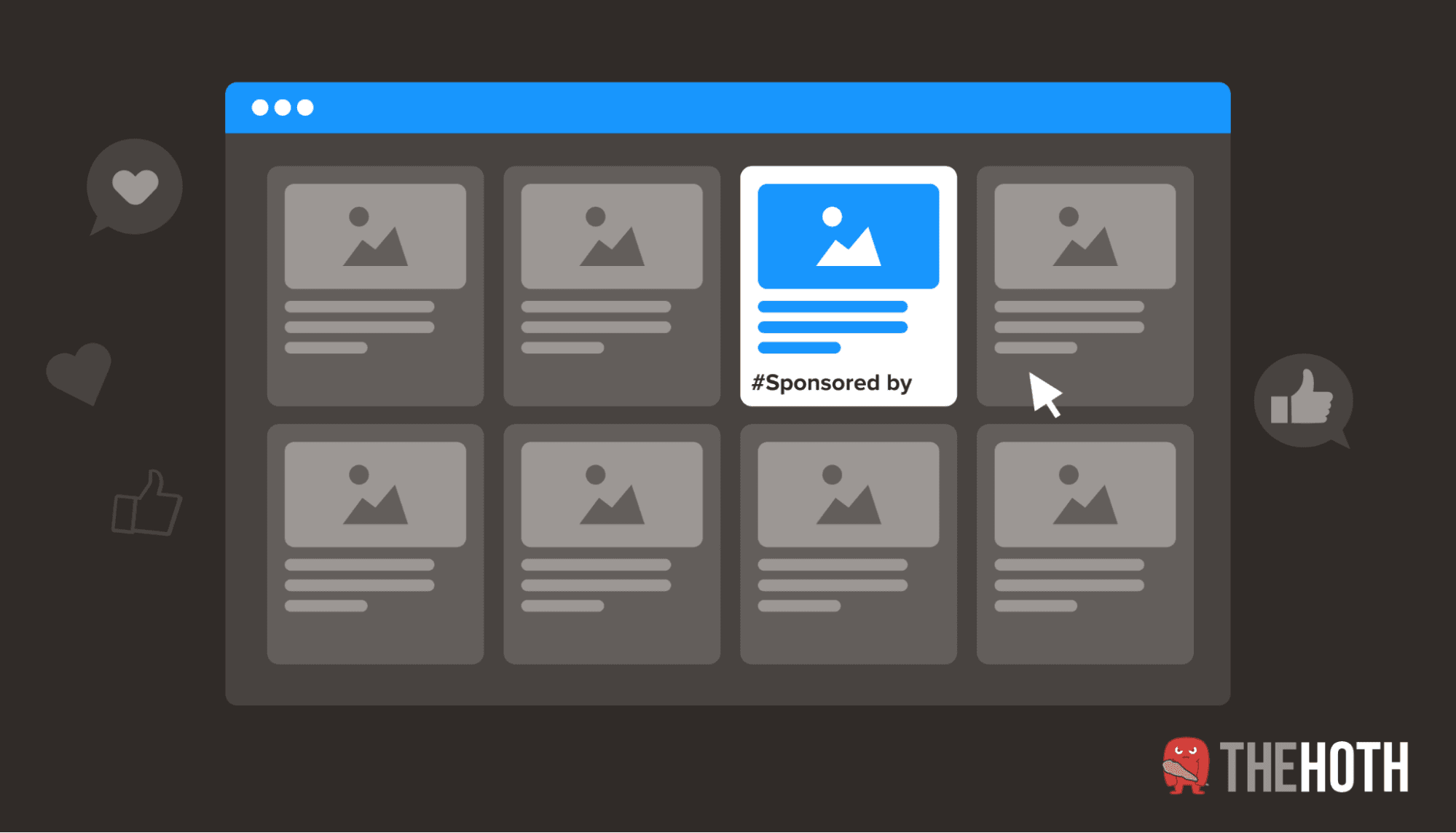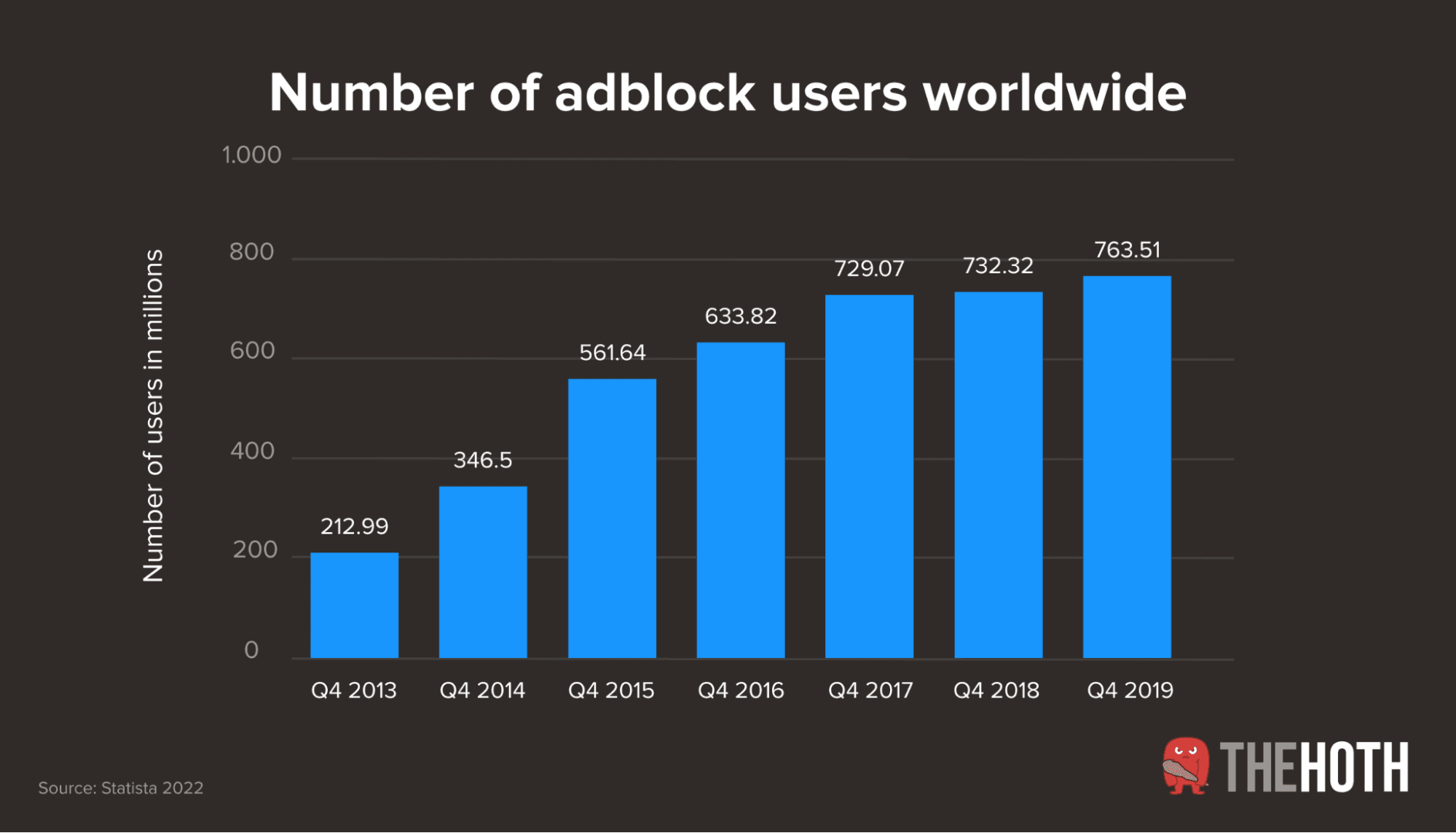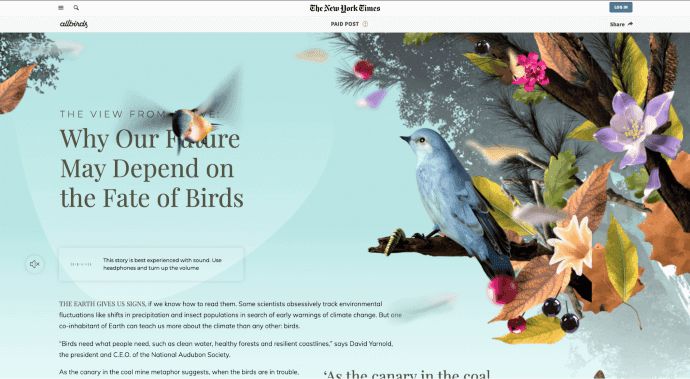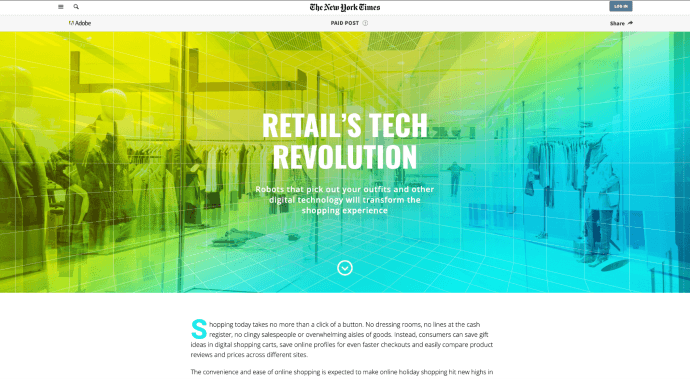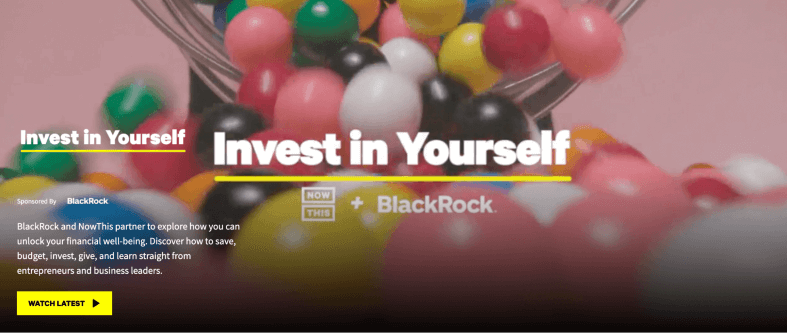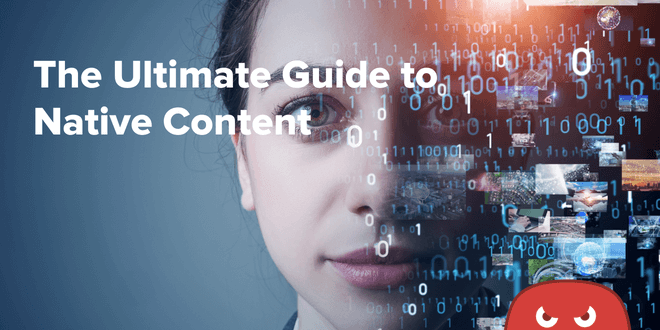
Now that online advertising has matured, it’s hard to stand out and grab a customer’s attention. In fact, 763 million+ internet users now use ad blockers.
Content marketing can help. The problem is you need to play the SEO game to get eyes on your content. If your site doesn’t show up in search, how will you get people to read your blog?
And sure, SEO is 100% worth it, but it can take a long time to pay off. Ads, on the other hand, can provide an almost instant boost but can be expensive.
Native content solves these issues by pulling the best aspects of both together. It’s a form of paid advertising, but instead of a naked sales pitch, it’s genuinely high-quality content on platforms with an established readership.
In this article, we’ll explain native content and its benefits before offering you some tips on creating native content that works.
 It’s true that many customers will know it’s an ad. Stanford found in 2018 that native content doesn’t “fool” consumers.
That was several years ago, so you would think native content would be less effective, especially as even more people recognize it’s an ad.
So why is it still growing rapidly, with advertisers spending billions of dollars on native content each year? Well, it works.
Even if you know it’s an ad, the format means that you can create an ad that readers genuinely relate to, rather than a quick “buy our product” pitch.
It’s true that many customers will know it’s an ad. Stanford found in 2018 that native content doesn’t “fool” consumers.
That was several years ago, so you would think native content would be less effective, especially as even more people recognize it’s an ad.
So why is it still growing rapidly, with advertisers spending billions of dollars on native content each year? Well, it works.
Even if you know it’s an ad, the format means that you can create an ad that readers genuinely relate to, rather than a quick “buy our product” pitch.
 Imagine a potential customer knows they have a problem they want to fix, but they aren’t aware that a solution exists. We can say they’re “problem-aware.”
Here’s where your native content comes in. You can call out their problem in the title of your piece, then elaborate on that problem and show them how to solve it. They’re now “solution-aware.”
Now that they know such a solution exists, you could simply use implicit CTAs to drive them to your website or the next stage of the funnel. They may click out of curiosity, stumbling upon your brand.
Alternatively, you can directly state that your brand provides the solution they need. Since they’re on your content, and they want their problem solved, they’re likely to click through instead of looking at your competitors.
As you can see, this could offer a high ROI if you do it right.
Imagine a potential customer knows they have a problem they want to fix, but they aren’t aware that a solution exists. We can say they’re “problem-aware.”
Here’s where your native content comes in. You can call out their problem in the title of your piece, then elaborate on that problem and show them how to solve it. They’re now “solution-aware.”
Now that they know such a solution exists, you could simply use implicit CTAs to drive them to your website or the next stage of the funnel. They may click out of curiosity, stumbling upon your brand.
Alternatively, you can directly state that your brand provides the solution they need. Since they’re on your content, and they want their problem solved, they’re likely to click through instead of looking at your competitors.
As you can see, this could offer a high ROI if you do it right.
 Depending on the type of problem you’re solving, how you’re doing so, and the platform you’re posting the native content on, full-blown videos may work better. Some things can be explained much better via video than text.
Depending on the type of problem you’re solving, how you’re doing so, and the platform you’re posting the native content on, full-blown videos may work better. Some things can be explained much better via video than text.
What is Native Content?
Native content, also called branded content or sponsored content, is a form of advertising that looks like a piece of high-quality organic content on a website. These can be articles, case studies, videos, and many other forms of content. The important thing is that they look like content and are genuinely helpful. That said, it’s important not to deceive the customer. Therefore, there are a few ways people can distinguish native content from truly organic content:- It might say “branded content” or “sponsored content” somewhere on the piece.
- It may say “recommended” or “suggested.”
- It may contain small icons users can hover over to see it’s an ad and to close the ad.
Native content vs. native advertising: Is there a difference?
Native content and native advertising are used interchangeably, and they’re fairly similar in that they both are paid marketing strategies designed to sell. However, native ads look more explicitly like ads that are part of a website. They link to a landing page on your site, and you pay per click or impression. Native content is meant to look like an organic blog post, video, case study, or another piece of content. So it is a piece of content that fits right into the publication it’s on. It uses storytelling, research, and other common content elements to attract the reader’s attention. Also, to help make sure it matches the voice and needs of the readers, you often pay the publication’s own editorial team to create the piece, rather than write it in-house.Benefits of Native Content
Native content can be a great tool for marketers because it looks and acts like a real piece of content. Here are some ways it helps brands and marketers:Helps fight ad fatigue
We’ve all heard stats about how many ads people see and how they’re sick of them. Well, native content can help. Not only does it look like real content… but it provides the same type of value that a true piece of high-quality content would. It’s true that many customers will know it’s an ad. Stanford found in 2018 that native content doesn’t “fool” consumers.
That was several years ago, so you would think native content would be less effective, especially as even more people recognize it’s an ad.
So why is it still growing rapidly, with advertisers spending billions of dollars on native content each year? Well, it works.
Even if you know it’s an ad, the format means that you can create an ad that readers genuinely relate to, rather than a quick “buy our product” pitch.
It’s true that many customers will know it’s an ad. Stanford found in 2018 that native content doesn’t “fool” consumers.
That was several years ago, so you would think native content would be less effective, especially as even more people recognize it’s an ad.
So why is it still growing rapidly, with advertisers spending billions of dollars on native content each year? Well, it works.
Even if you know it’s an ad, the format means that you can create an ad that readers genuinely relate to, rather than a quick “buy our product” pitch.
Builds trust
Good native content is informative and helpful, not overly salesy. That plays a big part in why readers don’t treat native content like standard ads. The reader doesn’t feel like you’re just pushing an ad on them. They feel as if you care about helping them solve their problems. Plus, the reader may learn something from you. You get to demonstrate your expertise and authority, keeping you top of mind. Even if they don’t buy now, you stay in their brains, often landing you the sale at a later time. Native content also lets you show customers that your organization shares their values. For instance, if your organization is passionate about a social issue — as you’ll see in our examples later — you can write a native content piece about it.Can fill funnel gaps
One of the best roles for native content is filling gaps in the customer journey and in your marketing funnels. Imagine a potential customer knows they have a problem they want to fix, but they aren’t aware that a solution exists. We can say they’re “problem-aware.”
Here’s where your native content comes in. You can call out their problem in the title of your piece, then elaborate on that problem and show them how to solve it. They’re now “solution-aware.”
Now that they know such a solution exists, you could simply use implicit CTAs to drive them to your website or the next stage of the funnel. They may click out of curiosity, stumbling upon your brand.
Alternatively, you can directly state that your brand provides the solution they need. Since they’re on your content, and they want their problem solved, they’re likely to click through instead of looking at your competitors.
As you can see, this could offer a high ROI if you do it right.
Imagine a potential customer knows they have a problem they want to fix, but they aren’t aware that a solution exists. We can say they’re “problem-aware.”
Here’s where your native content comes in. You can call out their problem in the title of your piece, then elaborate on that problem and show them how to solve it. They’re now “solution-aware.”
Now that they know such a solution exists, you could simply use implicit CTAs to drive them to your website or the next stage of the funnel. They may click out of curiosity, stumbling upon your brand.
Alternatively, you can directly state that your brand provides the solution they need. Since they’re on your content, and they want their problem solved, they’re likely to click through instead of looking at your competitors.
As you can see, this could offer a high ROI if you do it right.
How to Make Native Content That Works
Creating native content that does its job well requires a fair bit of time. You have to know your customers’ problems and address them — clickbait articles or videos lacking helpful content won’t do. Here’s how to make content that works:Understand and answer a pressing customer problem
As mentioned, start by researching and noting your customers’ most pressing problems. Surveys are a good start, but customers may not be entirely truthful — through no fault of their own. So besides surveys, look online in forums or Facebook groups where your target market hangs out. They tend to be more honest about their problems there. Also, check out related searches and “people also ask” questions on Google to find common questions in your niche. Once you see a pattern in customer problems, pick one that you can answer with content.Know your customer’s stage of awareness
The stage of awareness reflects how much they know about their problem, potential solutions, and your brand. There are five:- Stage 1 — Unaware: They aren’t aware they have a problem at all.
- Stage 2 — Pain Aware: They know they have a problem but don’t know solutions exist.
- Stage 3 — Solution Aware: They know solutions exist but don’t know about your brand.
- Stage 4 — Product Aware: They know of your brand’s solutions but don’t know if it’s right for them vs. other solutions.
- Stage 5 — Most Aware: They’re almost ready to buy, but need a final nudge.
Don’t be too “salesy”
The main marketing goal of this piece is to move the customer to the next step of the funnel and deliver value — so avoid any hard selling language aside from a CTA button at the end. Instead, use soft CTAs. Depending on your customer’s stage of awareness at the end of the piece, you could sprinkle in your brand name with links to the next piece of your funnel or even just the solution you offer as the anchor text. For example, a financial advisor could link the phrase “saving for retirement” to their page if their piece educates the reader about types of retirement accounts.Add visual elements
If you’re writing a native article, make sure to add visuals and other creative design elements. These attract attention and make the piece more appealing to read. Depending on the type of problem you’re solving, how you’re doing so, and the platform you’re posting the native content on, full-blown videos may work better. Some things can be explained much better via video than text.
Depending on the type of problem you’re solving, how you’re doing so, and the platform you’re posting the native content on, full-blown videos may work better. Some things can be explained much better via video than text.
Target the right websites
Amazing native content won’t work if it doesn’t get in front of your target audience. So figure out which websites and blogs they visit, and get your content on those. Not only will more of your ideal customers see the article, but it will blend in better and be more relevant to what all readers are reading about or looking for at that moment. For example, a financial advisor would want to get their native content on a personal finance blog, not a fitness blog. It doesn’t just have to be your niche, though. It could be adjacent or even fairly irrelevant sites your customers visit (as long as you have data to back it up). For instance, say a financial advisor firm wanted to target a younger audience moving up in the workforce and earning more. They may advertise on a news website targeted toward millennials. To find creative targets like this (backed by data), look at other pages your audience likes using Facebook’s Audience Insights.3 Awesome Native Content Examples to Help You Get Started
Let’s look at a few examples of high-quality native content:1. New York Times and Allbirds
Allbirds is a shoe company passionate about environmental sustainability. Instead of hard-selling that, they created a native article diving deep into how birds help the planet. This is an interesting angle, as many aren’t aware that various species of birds significantly impact the environment. It also appeals particularly to the New York Times’s environmentally-conscious audience. The article itself is a listicle covering different bird species and their impacts. Each section describes a different bird and offers stats detailing its importance to the earth. The standout element here, though, is the attractive visuals. There’s a lot of color, and you can interact with the images by hovering your cursor over them. The overall article ties back to Allbirds’ values. Thus, the CTA urges readers to learn more about Allbirds sustainable business practices. Readers land on the brand’s website to learn more about its values… then can go shop for shoes. Notice that it says “Paid Post” at the top — readers can see that, but many won’t care because the article is visually attractive and has interesting content.2. New York Times and Adobe
Here’s another awesome native article from the NYT. This time, Adobe is covering a broad trend in its target market of retailers — how technology is changing the consumer experience. Adobe covers a few specific trends within the retail tech revolution. It uses a mix of storytelling, explanation, stats, and quotes from industry leaders to create a compelling narrative. Images and color are sprinkled throughout the post to break up text and draw the eye towards points of emphasis. Overall, it’s helpful content for retailers and positions Adobe as an authority in technology for retailers. Of course, they put a CTA at the end to direct readers to their website, but it doesn’t hard-sell anything. Just the fact that they write about the tech in such detail implies Adobe offers the solutions retailers may need.3. NowThis and Blackrock
Native content doesn’t have to be written articles. Video is a powerful medium, and is also a great option for native content. That’s why BlackRock partnered with social media-focused news organization NowThis to create the Invest in Yourself video series. These are personal finance videos revolving around investing money and time into gaining new skills, advancing your career, improving your finances, and similar topics. Videos are grouped into three categories:- Advice
- Q&A
- Full-length features
Combine the Best of Paid Ads and Content Marketing
Native content can help you lower the consumer’s guard when it comes to ads. But not just that, it can build trust and secure customer loyalty if you create content that’s genuinely helpful and enjoyable to read. Follow the tips laid out in this article and study the examples to get some inspiration. That said, if you need help creating engaging, high-converting sponsored content, our team is happy to help. Schedule a call with us today to learn how our experts can create native content that builds authority and grows your brand.The author
Rachel Hernandez
description
Previous
The 2022 Guide to Content Optimization
Next
Link Building for CBD SEO: Tactics to Get High-Quality Backlinks
Discussion
Comments
Shalushaan
August 1st, 2022
Thank you for sharing your great ideas

